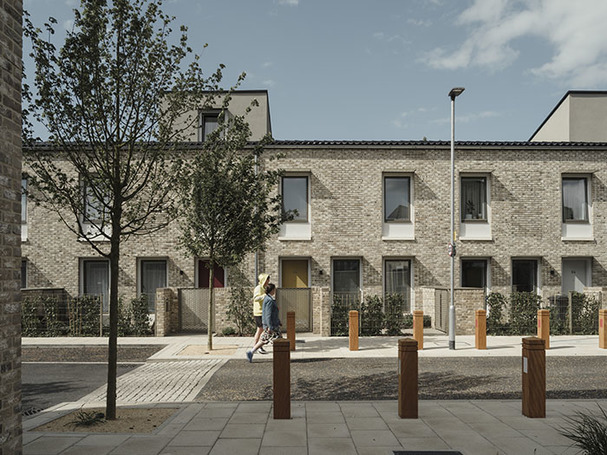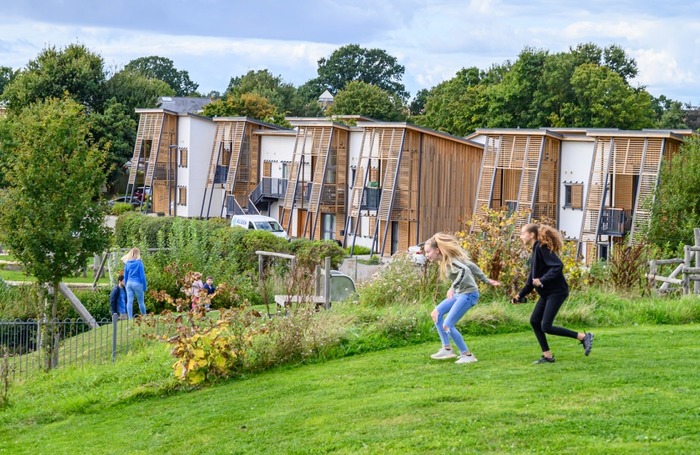COVID-19 has had a profound impact on our towns and cities. Sometimes that has been negative: working patterns have been disrupted, supply chains tested, jobs lost – not to mention the fact that people have fallen ill in considerable numbers.
However, the crisis has also demonstrated the resilience of our communities in the face of adversity and our capacity for innovative thinking. During lockdown, fresh perspectives on otherwise entrenched problems have emerged, new ways of doing things explored.
That innovative spirit was evident in the RIBA Rethink 2025 competition, which imagined designs for a post-pandemic world. This blog series picks up the mantle from that project, but homes in on the role played by ‘places’ in the well-being of communities and economic performance of towns and cities.
With contributions from leading placemaking experts, the series explores the emergent placemaking strategies that we should be considering as we rebuild our communities after COVID-19.
While emphasising different aspects of the placemaking process, what unifies the blogs is an openness to new ideas and a drive to expand the role of architects in the wake of the epidemic.
Blogs will be released individually over the coming weeks; please watch this space. In the meantime, the main themes explored through the series are set out below.
Designing healthy, sustainable places
COVID-19 has demonstrated the relationship between place and well-being, with some communities suffering disproportionately from the epidemic. But how should we design our towns and cities to improve personal and community welfare moving forward?
In her blog, Aude Bicquelet-Lock – Deputy Head of Policy and Research at the Royal Town Planning Institute – discusses this question and weighs up the challenges and opportunities faced by architects and planners as they look to build healthy settlements after the pandemic.
In a related post, Sophia Cox – Sustainability Adviser at UKGBC – explores the social value provided by healthy and sustainable places. Drawing on findings from her Task Group to Define Social Value for the Built Environment, Cox explains why a robust definition of social value can help us design healthier more sustainable places.

From community engagement to community resilience
Places should be designed with local communities in mind, and it is critical to engage residents in genuine consultation as part of the placemaking process.
In his blog post, Akil Scafe-Smith – Head of Design at Resolve Collective – discusses the recent history of community engagement in the UK. Showing how engagement is often tokenistic and ephemeral in nature, Scafe-Smith argues that we need to move towards an objective of fostering long-term community resilience.
The call for community-centred forms of placemaking is further explored by Maria Adebowale-Schwarte, Chief Executive of Foundation for Future London. In her blog, Adebowale-Schwarte discusses how we can design a more inclusive, more representative built environment as we move forward after COVID-19.
A third blog on this topic – authored by Simon Bandy, Strategy Director at Local Partnerships – discusses tactics for how to lead diverse place partnerships to successful outcomes. Drawing on his experience working in regeneration, development and infrastructure delivery, Bandy argues that successful placemaking projects are rooted in clear visions agreed by stakeholders up front and carefully managed through to delivery.
Reimagining the high street
COVID-19 has been the catalyst of some new forms of behaviour but has also accelerated existing trends. This is particularly true in the case of British high streets whose retail-centred model, already under strain for some time, now looks increasingly untenable.
In his blog post, Owain Lloyd-James – Head of Places Strategy at Historic England – explores tactics to reinvigorate high streets. Focusing on the role that heritage can play in nurturing successful places, Lloyd-James sets out a fresh vision for the future of high streets – one that is rooted in local character and existing local assets.
In a related blog post, Nicolas Bosetti – Research Manager at Centre for London – discusses the role that so-called 'meanwhile-use spaces' can play in reviving our town centres. Drawing on research from London boroughs, Bosetti explores how meanwhile-use can help nurture a more culturally-rooted vision for high streets and town centres.

Designing for the future
While some aspects of urban design are likely to be unchanged by the epidemic, other aspects will need careful revision.
In their blog post, People Matter Studio – one of the winners of the Rethink 2025 competition – discuss how we can begin planning for more autonomous communities. Rejecting the radial, hub-and-spoke design of most modern cities in favour of a lattice-like structure of smaller, self-sufficient neighbourhoods, their future place is structured around a principle of hyperlocal living.
Susan Emmett – Head of Market Engagement at Homes England – shows how this principle can be applied to new settlements as well as existing ones. In her blog post, Emmett discusses some of the design principles applied in their award-winning Inholm development; a new urban village in Cambridge which takes its inspiration from early local settlements.
Finally, Ben Derbyshire – Immediate Past President of the RIBA, Chair of HTA Design and Historic England Commissioner – looks at one of the key elements of the recently proposed planning reforms: design codes. In his blog, Derbyshire explores how design aspirations can be entrenched in code – and how those codes should, in turn, be interpreted.
These blog posts set out bold ideas for how we should structure the post-pandemic city. Insisting on a holistic understanding of design, they carve out new roles for architects whether in place visioning, community engagement or as drivers of much-needed social change. That's exciting in itself and will be useful input as we begin to design places suited for the future.
About the author
Frederik Weissenborn manages the Future Place programme. The Future Place programme advances and implements transformational thinking on strategic policy issues facing local authorities including: housing, health, economic regeneration, climate change and social justice.









